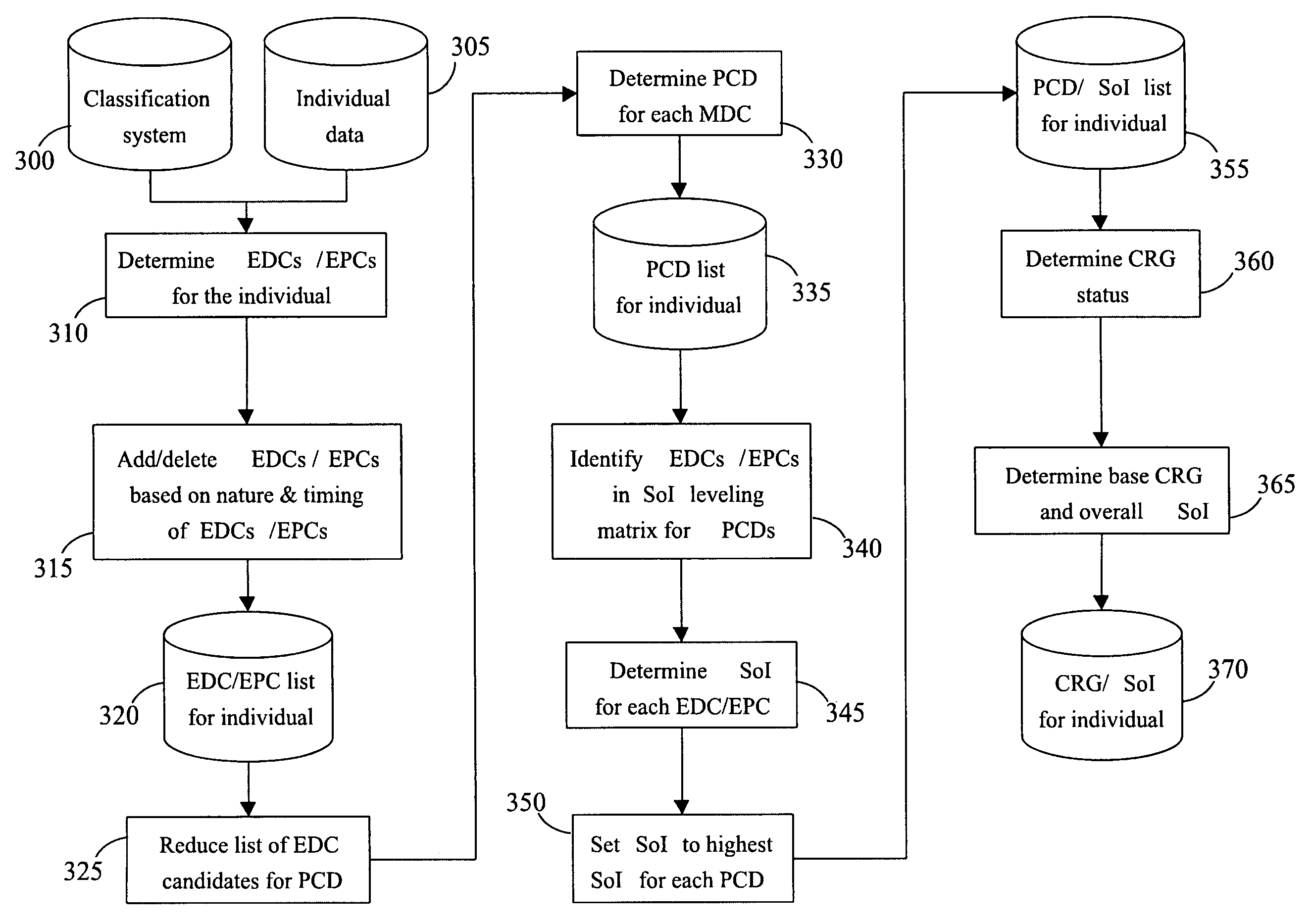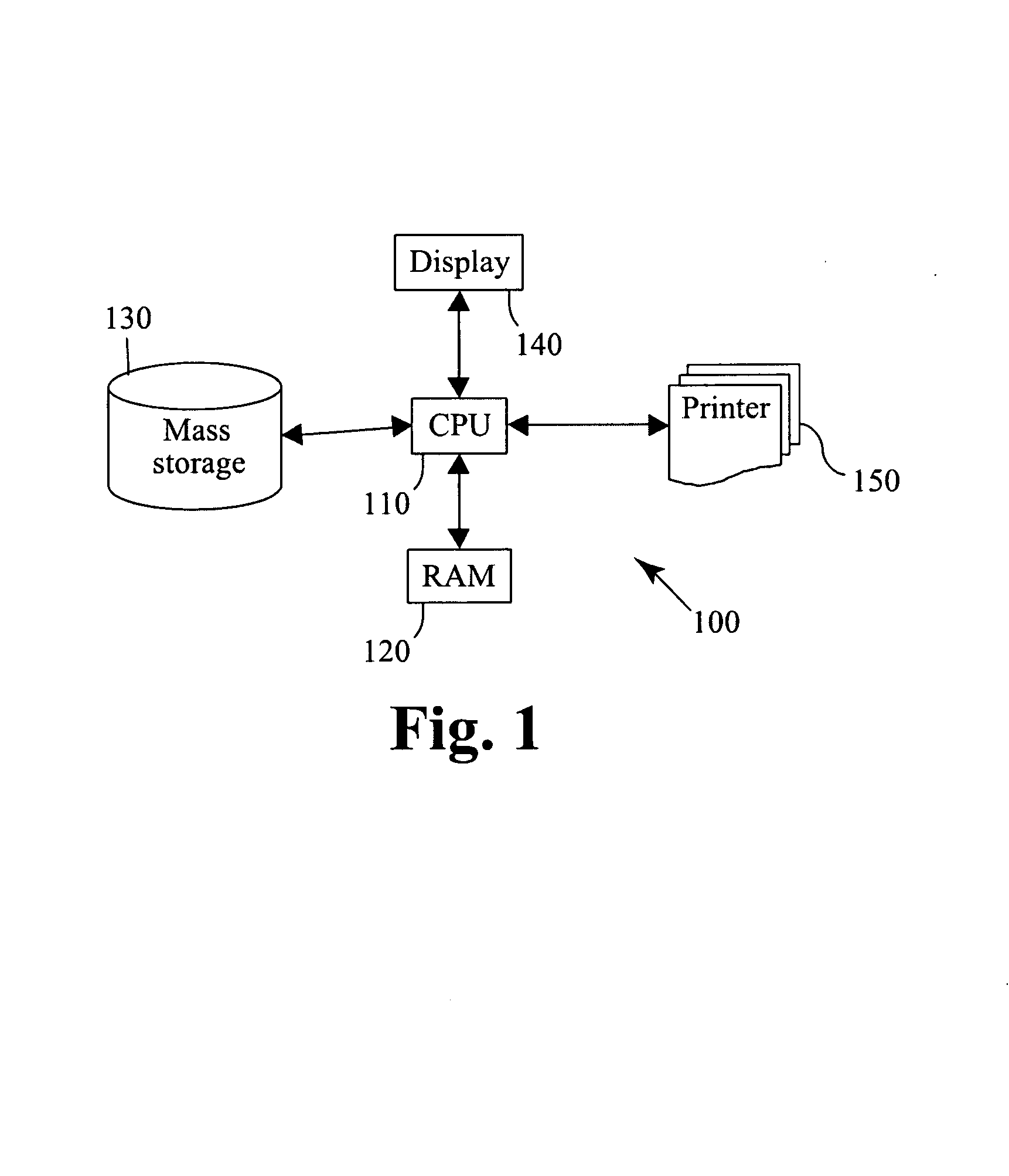Method of grouping and analyzing clinical risks, and system therefor
a risk and clinical risk technology, applied in the field of risk/cost analysis tools, can solve the problems of additive approaches, insufficient accuracy of relationship between ostensibly independent problems, and limited efficacy and utility of these approaches, and achieve the effect of accurate estimation
- Summary
- Abstract
- Description
- Claims
- Application Information
AI Technical Summary
Benefits of technology
Problems solved by technology
Method used
Image
Examples
Embodiment Construction
[0027]Almost all payers for health care (the government, insurance companies, self-insured companies, etc.) require providers to report on the services for which they are seeking reimbursement using coding schemes, thereby allowing the payers to process the requests for payment efficiently. Most hospitals use the International Classification of Diseases, 9th Revision, Clinical Modifications (ICD-9-CM), to code diagnoses, signs, symptoms, findings and other factors influencing health status. Most professional services and procedures performed in an ambulatory setting are reported using Current Procedural Terminology (CPT) codes and the Health Care Financing Administration (HCFA) Common Procedure Coding Systems (HCPCS), which includes the CPT codes. The present invention therefore will be described with reference to the ICD-9-CM, CPT and HCPCS codes. However, it will be understood that the present invention could be used with any other suitably detailed coding scheme, and that these c...
PUM
 Login to View More
Login to View More Abstract
Description
Claims
Application Information
 Login to View More
Login to View More - R&D
- Intellectual Property
- Life Sciences
- Materials
- Tech Scout
- Unparalleled Data Quality
- Higher Quality Content
- 60% Fewer Hallucinations
Browse by: Latest US Patents, China's latest patents, Technical Efficacy Thesaurus, Application Domain, Technology Topic, Popular Technical Reports.
© 2025 PatSnap. All rights reserved.Legal|Privacy policy|Modern Slavery Act Transparency Statement|Sitemap|About US| Contact US: help@patsnap.com



